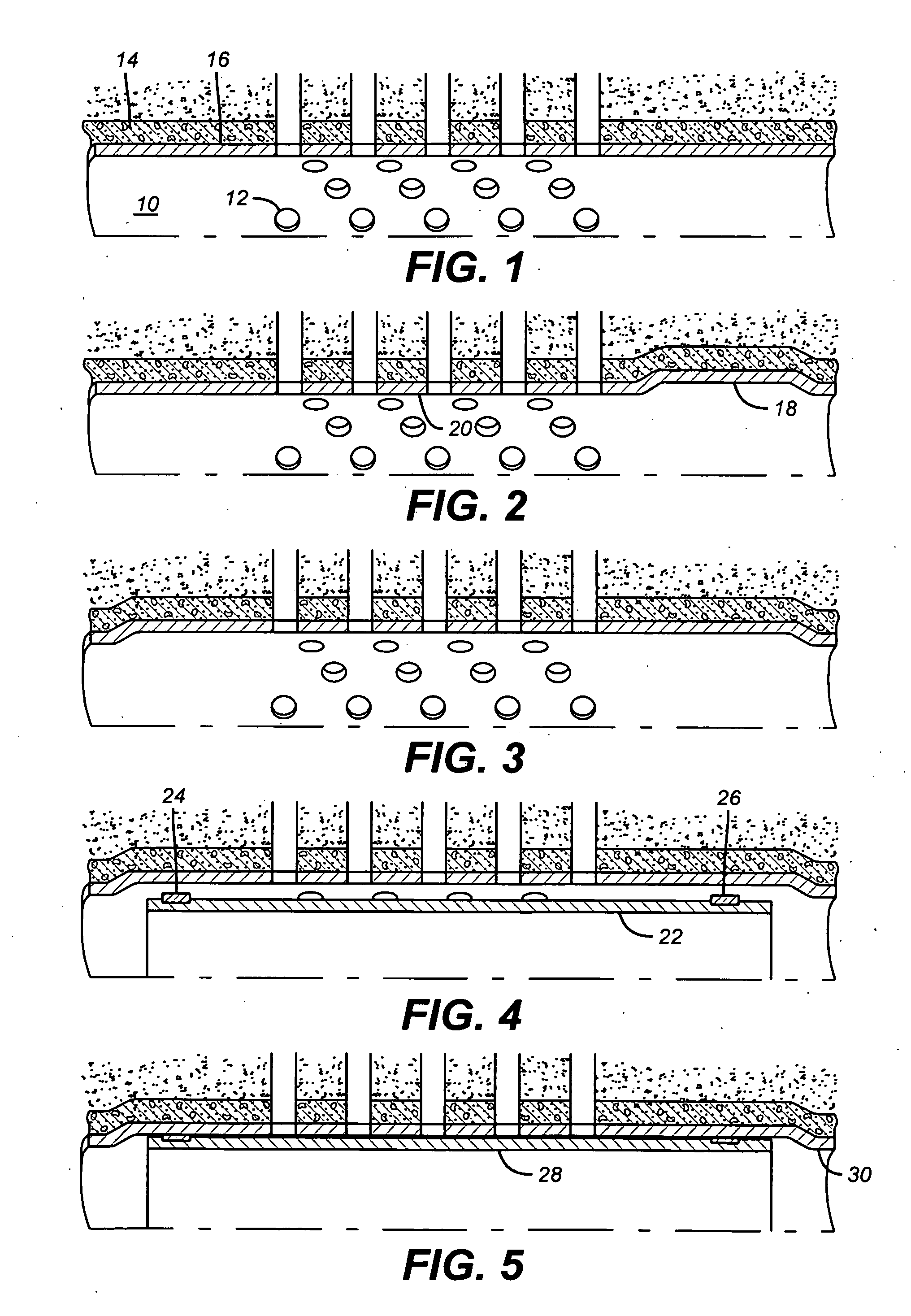Flush mounted tubular patch
a tubular patch and flush mount technology, applied in the field of tubular patches, can solve the problems of increasing difficulty, increasing difficulty, and increasing difficulty, and achieving the effect of improving the stability of the patch, and increasing the difficulty of installation
- Summary
- Abstract
- Description
- Claims
- Application Information
AI Technical Summary
Benefits of technology
Problems solved by technology
Method used
Image
Examples
Embodiment Construction
[0011]FIG. 1 shows a casing 10 that is either damaged itself or has damage in the adjacent perforations 12. There is cement 14 around the casing 10 in the wellbore 16. As a first step in the method an undamaged zone 18 is expanded. Zone 18 can be above the damaged area 20 or it can be below or it can be both above and below. Preferably, when expanding bottom up the zone 18 is uphole from the damaged area 20. Expanding
[0012] zone 18 will require expansion of the cement 14 and the formation 22 beyond it. The formation beyond can be rock that will expand but the higher the pore pressure, Young's modulus and Poisson's ratio, the harder will it be to accomplish the expansion. This makes formations with lower reservoir pressure, Young's modulus and Poisson's ratio more likely candidates for the method.
[0013] The reason an undamaged zone on either or both sides of a damaged zone is expanded first is that a failure or crack that defines the damaged zone will want to propagate if the damag...
PUM
| Property | Measurement | Unit |
|---|---|---|
| internal diameter | aaaaa | aaaaa |
| diameter | aaaaa | aaaaa |
| pressure | aaaaa | aaaaa |
Abstract
Description
Claims
Application Information
 Login to View More
Login to View More - R&D
- Intellectual Property
- Life Sciences
- Materials
- Tech Scout
- Unparalleled Data Quality
- Higher Quality Content
- 60% Fewer Hallucinations
Browse by: Latest US Patents, China's latest patents, Technical Efficacy Thesaurus, Application Domain, Technology Topic, Popular Technical Reports.
© 2025 PatSnap. All rights reserved.Legal|Privacy policy|Modern Slavery Act Transparency Statement|Sitemap|About US| Contact US: help@patsnap.com


